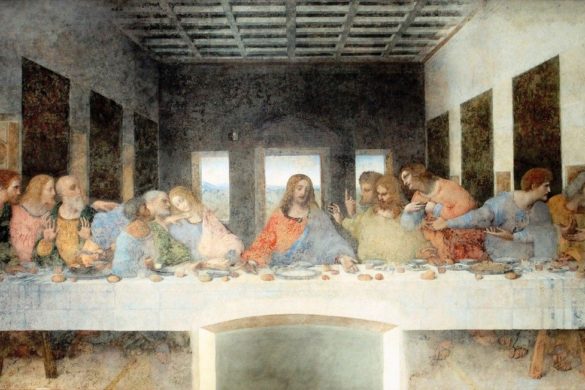Once a year, hundreds of wine producers gather under one roof for VinItaly, an Italian wine lovers paradise. During my last visit I was lucky enough to attend a seminar and wine tasting involving a grape called Chiavennasca, which is grown in an area called Valtellina, a UNESCO World Heritage Site in the Lombardy region in northern Italy.
You don’t really hear much about wines from that area, so I was intrigued and excited to learn about this grape unknown to me and sample the wines. And it’s downright fun to say Chiavennasca. Though it’s a lot harder after several glasses of wine. Trust me.
I’m sure many of you are familiar with Nebbiolo, which is the main red wine grape grown in Piedmont. Well, Chiavennasca is the local name for the same grape, which is actually thought to be older than its Piedmontese counterpart, dating back to the Etruscan times.
The sub-alpine climate and more northerly location produce a very different wine than your Borolos and Barbarescos. Nebbiolo will always be a star in Piedmont – but in Lombardy, its Chiavennasca.
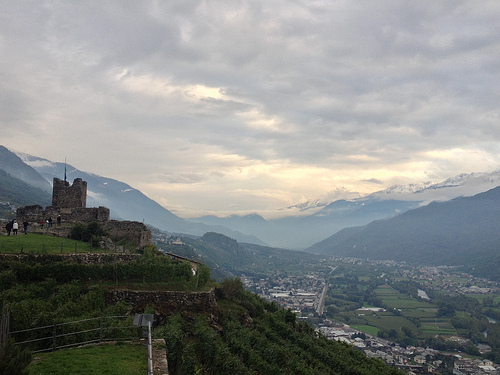
gorgeous views of the valley
Valtellina is located in the Adda Valley, which is about 40km wide, runs east to west near the Adda River and is bordered by Switzerland. All of the vineyards in the area are grown on extremely steep terraces cut into rocky mountain slopes, which is a marvel to look at, but also presents challenges for caring for and harvesting the grapes.
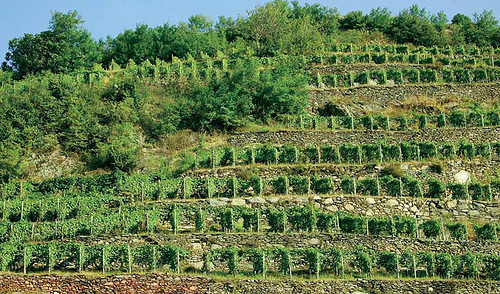
Terraced vines cut into the rocky mountains
The vines, which are anywhere from one to one-hundred years old are cultivated by hand, and have been for over ten centuries, which is reflected in both the price and the limited quantities of wine produced.
Two of the main varietals have earned DOCG distinction – Valtellina Superiore and Sfursat. Today I am going to talk about Sfursat.
Sfursat (Sforzato)
This wine is the most typical and oldest of Valtellina wines. It’s made with 100% Chiavennasca using the same process as Amarone, (another favorite Italian wine) known as appassimento.
Basically, small clusters of sun-exposed grapes are kept on the vines as long as possible to ripen. In late September, highly skilled workers harvest the grapes by hand and place them in wooden crates – in a single layer. No bruising these delicate juicy orbs! Next, they’re taken back to fruit sheds (by helicopter!) to dry in a cool, well-ventilated area for 100 days.
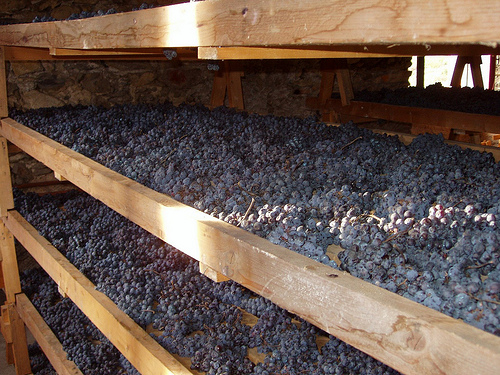
chiavennasca grapes drying
During that time, the grapes shrivel and loose 30-40% of their water and you’re left with intensely concentrated juice in fruit resembling raisins. It takes about one kilo of grapes just to make one bottle of Sfursat.
After spending about two years fermenting in barrel and bottle, the result is an intense, rich, even elegant garnet red wine, with a high alcohol content, with flavors that can include ripe red fruit, prune, coffee, chocolate, tobacco and spices like vanilla and cinnamon, depending on the vintage.
Bottom line : If you love Amarone, you’ll love Sfursat.

Nino Negri
One of the oldest and most esteemed wine producers in Valtellina is Nino Negri, who has been a symbol in the valley since 1897. The winery is located in Chiuro, in an old 15th century castle known as Castello Quadro.
Negri has been making their Sfursat “5 Stelle” since 1983. Their 2001 Sfursat was awarded ‘Best Italian Red Wine’ by Gambero Rosso, which is no small feat. And their winemaker, Casimiro Maule, who’s been at the helm since 1971, was crowned winemaker of the year in 2007. So you know you’re getting quality wines made by very talented and passionate people.
Since only the best grapes are chosen to make this style of wine, they don’t produce Sfursat every year. And when they do, only a select 25% of grapes make the cut. Their Sfursat is aged for 18 months in new French oak barrique, bottled and held for another six months before release.
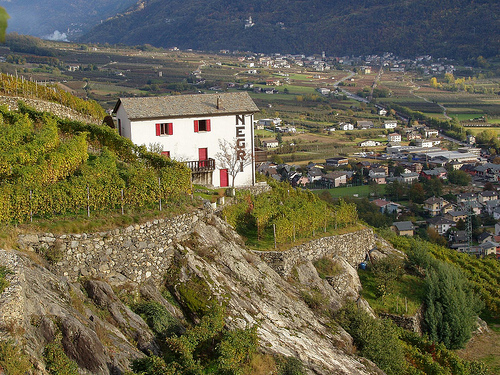
Negri winery
Since Negri was the featured producer at VinItaly, I participated in a vertical tasting (which means tasting several different vintages of the same exact wine) of their Sfursat. We sampled Sfursat 5 Stelle Vallentina DOCG vintages 1997, 2001, 2002, 2004, 2007 and 2009.
They were all very good, but my personal fave was 2001, which had a cherry aroma and flavor, as well as a mineral quality and a long finish. I also liked the 2009, which is the most current vintage. But if you have the opportunity to try any of them, I wouldn’t hesitate one bit!
And if you happen to be staying in southern Switzerland, or in the Italian Lakes Region, a visit to the area would make an unforgettable day trip, provided you have a car. I can all but guarantee you’d have a fabulous experience touring, tasting and learning more about the elegant wines, surrounded by terraced vineyards and picturesque landscapes.
- You might be interested in taking a cool virtual tour of the area with narrated details here.
Photos © Fredrick Wildman
Are you a food and wine lover heading to Italy? Find out how I can create a custom foodie adventure.


